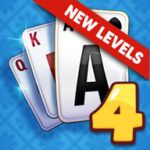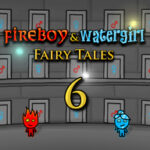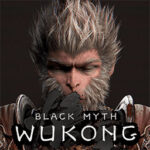Introduction
"Black Myth: Wukong" is an upcoming action role-playing game that has captured the gaming world's attention with its jaw-dropping visuals, mythological inspiration, and Souls-like combat. Developed by Game Science, a Chinese indie studio founded by former Tencent developers, this title brings the legendary character Sun Wukong (the Monkey King) to life in a dark and mature reimagining of the classic Chinese novel Journey to the West.
Since its first gameplay reveal in 2020, the game has set the internet abuzz with comparisons to AAA titles from FromSoftware and Team Ninja. With Unreal Engine 5 powering its immersive world, "Black Myth: Wukong" aims to redefine what indie studios can achieve—especially in the realm of Eastern mythology-based storytelling.
The Origins of Black Myth: Wukong
Game Science first teased Black Myth: Wukong in August 2020 with a 13-minute gameplay demo. Unlike many first reveals, this one showcased real, polished gameplay with stunning detail and refined mechanics. The world took notice, and so did publishers and investors.
This was a bold step by a small Chinese studio in a market dominated by mobile gaming and gacha mechanics. Instead of following the path of monetization-heavy titles, Game Science committed to crafting a high-quality, narrative-driven single-player experience—drawing inspiration from Chinese folklore and global action RPG giants.
The overwhelming response prompted the studio to increase staff, secure larger funding, and eventually shift development to Unreal Engine 5. The studio’s ambition was clear: to create China’s first internationally acclaimed AAA-quality console game.
Exploring the Mythology of Sun Wukong
At the heart of Black Myth: Wukong lies the legendary tale of the Monkey King. In Chinese mythology, Sun Wukong is known for his mischief, immense strength, shape-shifting abilities, and magical staff. He’s a trickster and a hero, often defying gods and demons alike.
The game doesn’t offer a straightforward retelling of Journey to the West. Instead, it takes a darker, more surreal interpretation of the myth, allowing for creative liberties while retaining key narrative beats. Players step into the role of the "Destined One"—a mysterious monkey warrior believed to be a reincarnation or parallel of Wukong himself.
This mythological foundation allows Game Science to explore rich themes of immortality, identity, divine punishment, and cosmic chaos. It’s both epic and introspective, staying true to its cultural roots while adding layers of modern narrative complexity.
Gameplay Mechanics and Combat Design
Combat in Black Myth: Wukong is one of its standout features. Drawing clear influence from the Soulsborne genre, it’s fast-paced, deliberate, and brutally unforgiving—yet layered with mystical flair and traditional Chinese martial arts.
Key Gameplay Elements:
-
Stamina-Based Combat: Strategic dodging, parrying, and timing-based strikes.
-
Magic and Transformations: Players can use spells and shapeshift into creatures like insects or statues to outwit enemies.
-
Boss Battles: Massive, cinematic, and deeply rooted in myth.
-
Weaponry: The signature staff is versatile, with combos, reach mechanics, and magical enhancements.
Soulslike Inspirations:
Combat isn't just about mashing buttons. Like Sekiro or Nioh, success depends on mastering enemy patterns, using terrain, and employing the right mix of aggression and patience. Even standard enemies pose a threat, and boss fights are designed to test skill, not brute force.
Visuals and Art Direction: A Stunning Achievement
What sets Black Myth: Wukong apart visually is its masterful use of Unreal Engine 5. Environments shimmer with life—from moss-covered temples and wind-blown bamboo forests to eerie, fog-drenched mountain passes. Every frame feels like a moving painting.
Artistic Features:
-
Photorealistic Lighting: Nanite and Lumen technologies add depth and realism.
-
Cultural Design: Armor, architecture, and landscapes are inspired by Tang dynasty aesthetics and Daoist symbolism.
-
Creature Design: From three-headed wolves to ethereal fox spirits, enemies are drawn from Chinese folklore with horrifying elegance.
Even early builds demonstrated visual fidelity that rivals (or exceeds) games like Elden Ring or Ghost of Tsushima.
Narrative and World-Building
Though much of the story is still under wraps, early previews and trailers suggest a layered, atmospheric narrative. Players are not simply on a quest for power but are uncovering truths about existence, identity, and celestial politics.
World Structure:
-
Semi-Open World: Vast interconnected zones filled with secrets, lore, and environmental storytelling.
-
NPCs and Side Quests: Cryptic allies, cursed wanderers, and divine messengers add depth to the world.
-
Dynamic Storytelling: Players unlock fragmented narratives through exploration and combat—mirroring FromSoftware’s model.
The philosophical undertones align with Daoist and Buddhist principles, reflecting on life, karma, suffering, and enlightenment.
Enemy Design and Boss Encounters
Black Myth: Wukong's boss battles are epic, mythologically driven spectacles. Each boss is distinct—both in appearance and combat style—and presents a puzzle in its own right.
Boss Types:
-
Divine Beasts: Gigantic, supernatural creatures with elemental powers.
-
Corrupted Gods: Formerly noble deities fallen into madness or vengeance.
-
Mythical Warriors: Skilled opponents with combat techniques mirroring the player.
Each boss encounter emphasizes adaptability. Some fights are cinematic, with mid-battle transitions and multi-phase mechanics, while others are brutal duels with minimal flair and maximum pressure.
Customization, Progression, and Builds
While details on progression are limited, gameplay previews indicate a robust customization system:
Progression Features:
-
Skill Trees: Multiple branches focusing on offense, defense, transformations, or elemental attacks.
-
Gears and Artifacts: Items imbued with mythological essence that enhance playstyle.
-
Transformations: Key ability tied to Sun Wukong's lore—players can morph into animals or divine forms.
This opens the door for varied builds, from tanky brawlers to agile illusionists. The game encourages experimentation while rewarding mastery.
Platform Availability and Technical Performance
Black Myth: Wukong is expected to launch on PC, PlayStation 5, and Xbox Series X/S. The developers have promised a consistent experience across platforms with an emphasis on high frame rates and minimal load times.
Technical Details:
-
Ray Tracing and DLSS Support (PC)
-
Unreal Engine 5 Performance Optimizations
-
No Microtransactions or Gacha Mechanics
-
Focus on Single-Player Experience
This commitment to quality over monetization is refreshing in a market often dominated by live-service models.
Community Response and Global Hype
Few games from China have garnered as much global attention pre-release as Black Myth: Wukong. International media, YouTubers, streamers, and fans alike have heaped praise on each new trailer.
Fan Highlights:
-
“The Chinese Elden Ring”
-
Over 100 million YouTube views across official trailers
-
Massive Reddit threads analyzing every gameplay frame
Game Science has been relatively transparent—occasionally publishing blog updates, behind-the-scenes videos, and answering fan questions. While cautious in marketing, the studio is clearly listening to feedback.
Pros and Cons of Black Myth: Wukong
Pros
-
Visually Stunning: Among the best graphics in the industry.
-
Cultural Depth: Rich, untapped mythology beautifully presented.
-
Complex Combat: Soulslike but original in execution.
-
Narrative Ambition: Surreal storytelling meets folklore.
-
No Monetization Bloat: A true single-player experience.
Cons
-
Release Uncertainty: Multiple delays and vague dates.
-
Difficulty Barrier: May alienate casual players.
-
Unknown Post-Launch Support: Unclear if expansions or DLC are planned.
-
Indie Studio Risks: Execution may suffer due to lack of AAA infrastructure.
Expert Rating: How Does It Stack Up?
| Category | Score (out of 10) |
|---|---|
| Visual Fidelity | 10 |
| Combat and Gameplay | 9.3 |
| Story and World-Building | 9.0 |
| Innovation | 9.5 |
| Accessibility | 7.8 |
| Hype vs. Execution Risk | 8.5 |
| Overall Potential | 9.4 |
Overall Expert Rating: 9.2/10
Black Myth: Wukong is shaping up to be one of the most daring and visually captivating action RPGs of the decade. If Game Science can deliver on its promise, it may redefine what’s possible for indie studios globally.
Conclusion
"Black Myth: Wukong" is more than just a game—it’s a cultural milestone. It represents China’s growing influence in premium game development and a bold step forward for narrative-rich, mythology-driven gaming experiences.
With its potent mix of brutal combat, awe-inspiring visuals, and deep folklore, the game has the potential to rival titles from FromSoftware, Santa Monica Studio, and CD Projekt RED. Whether you’re a fan of mythology, challenging action games, or just looking for the next great story to lose yourself in, Black Myth: Wukong demands your attention.
As the Monkey King prepares to make his mark on a new generation, one thing is certain: the journey has just begun.




























